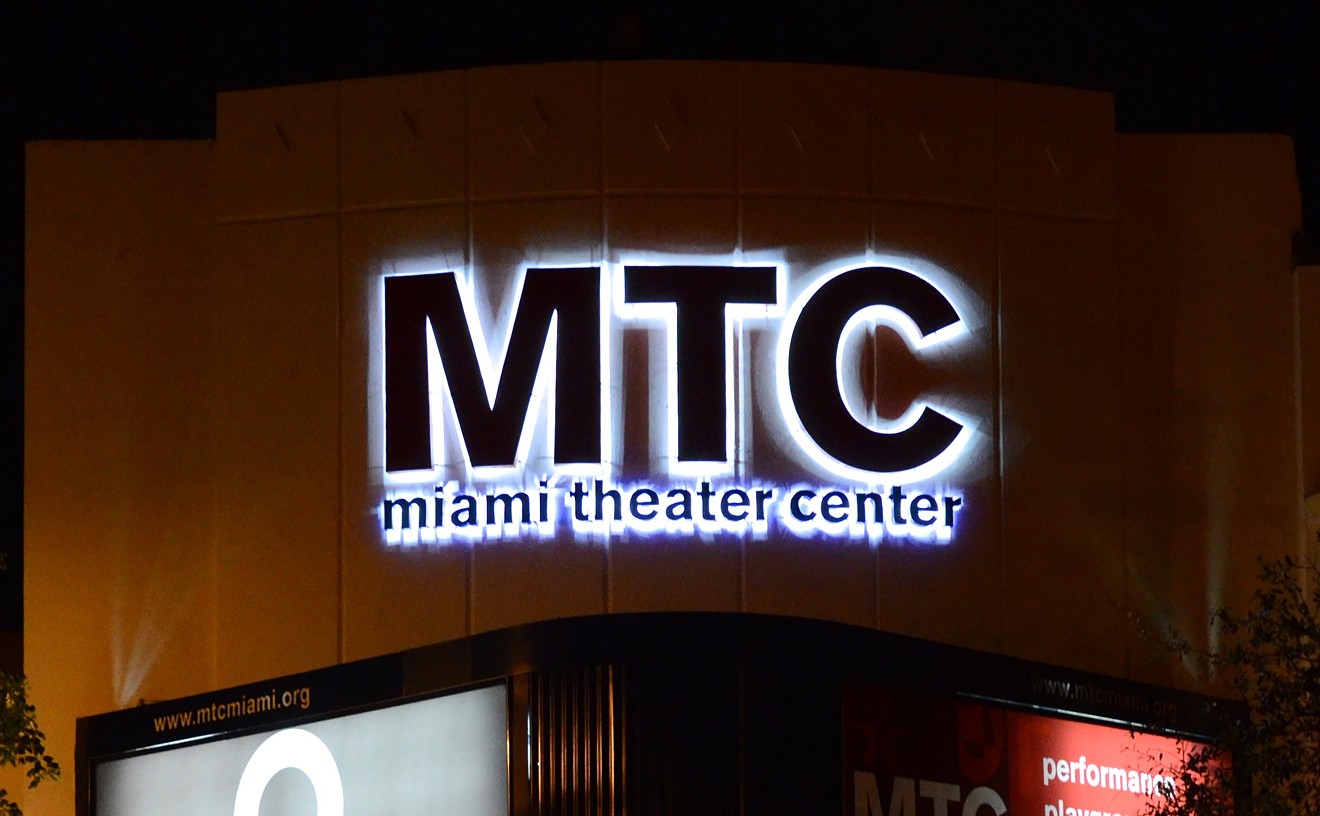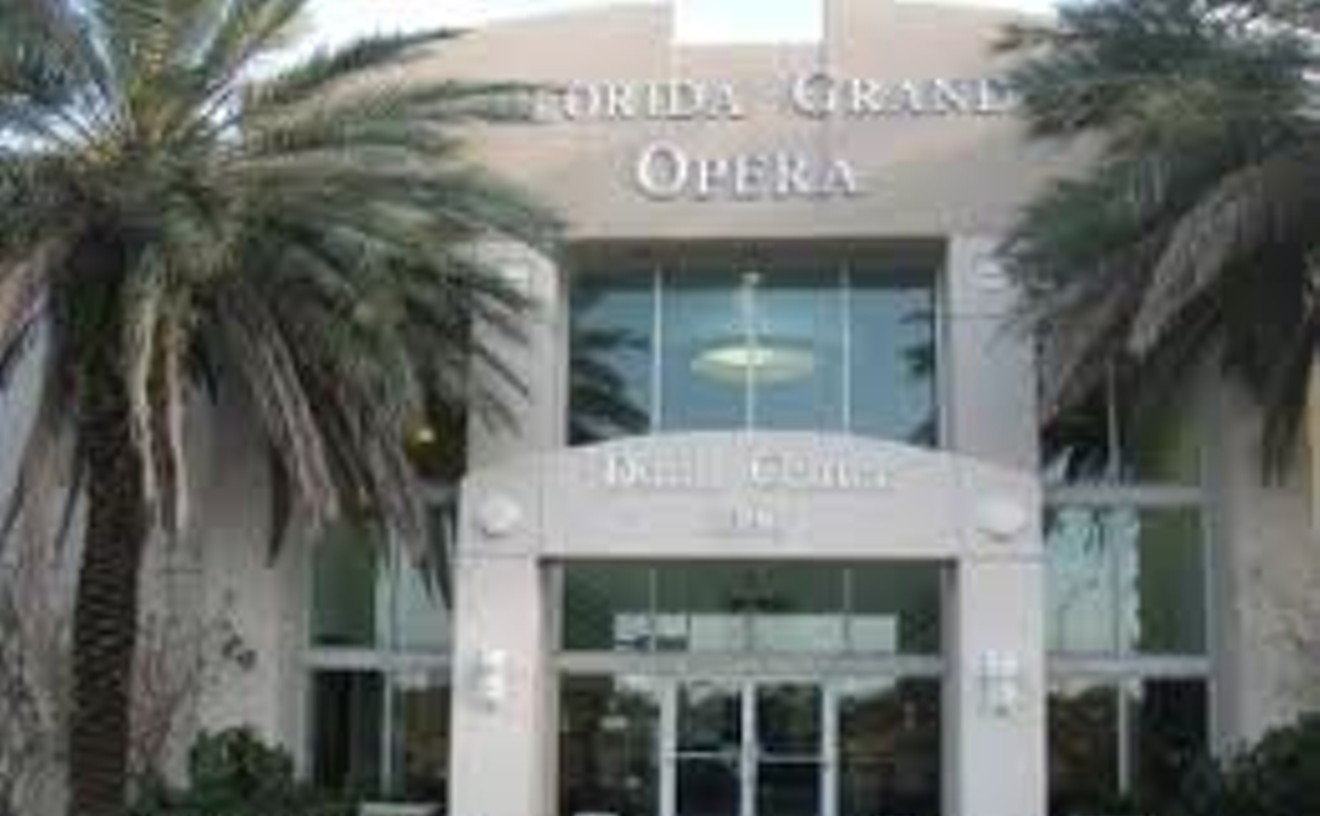Best Supporting Actress
Patti Gardner in "The New Century"
The New Century is a tough play. Its challenge lies in taking extremely improbable characters and locating within them a common humanity. Patti Gardner's character, Helene Nadler, is puzzling over the fact that her three children have become gay. But not just gay — they are peerlessly queer. The eldest is a garden-variety lesbian, the middle child is an M-to-F transwoman and a lesbian, and the youngest, a boy, is an S&M submissive obsessed with scat. Nadler prides herself on her complete, open-minded acceptance, and boldly, loudly declaims her love for her kids all over the place — but pulsing just underneath that confident façade is a deep mourning of the ordinary family life she had imagined for herself in girlhood. It was a delicate balancing act, and Gardner nailed it like few could.
- 1200 Anastasia Ave., Coral Gables, 33134 Map
- 305-446-1116
- www.gablestage.org
Best Citizen
Rev. George McRae
For more than 30 years, Liberty City pastor George McRae has toiled with an unpopular specialization: Caring for those living with HIV/AIDS. When he first became pastor of Mount Tabor Baptist Church on NW 66 Street in 1989, AIDS held such a strong stigma that its victims were shunned by many priests and pastors. But Palatka native McRae, who from his first day was out on the streets trying to clean up Liberty City's most drug-infested corners, has never been afraid to bring anybody into his flock. His church has become a haven for those who might be denied refuge anywhere else, where those inflicted with HIV/AIDS are given hot food, counseling, sermons, and as much of Reverend McRae's time as they want.
Best Ensemble Cast
Paul Tei, Scott Genn, Erik Fabregat, Sofia Citarella, George Schiavone, and Gregg Weiner in "Broadsword"

At first, we thought Broadsword's cast was too muted. What with Paul Tei, Scott Genn, Greg Weiner, and Erik Fabregat, the play should have been louder than life, as loud as the play's dark, metallic final song (for which several of the actors had to learn to play instruments). Later their sobriety came to seem entirely appropriate. As a band of aging, might-have-been rock stars from a working-class New Jersey town, these were men whom life had nearly beaten. Their shared tiredness communicated almost everything we needed to know about their shared history. Sofia Citarella, as the band's former biggest fan, and Weiner, as an impresario with a not entirely trustworthy smile, are the only ones who give off a whiff of life. Together they hint at the joy and the danger the rockers must have felt in their music, back when they still knew how to make it.
- 9806 NE Second Ave., Miami Shores, 33138 Map
- 305-751-9550
- mtcmiami.org
Best Part-Time Citizen
Aaron "the Downtown Don" Bondaroff
At age 33, Aaron "the Downtown Don" Bondaroff can't be called a hip kid anymore. He's just a little too old for that tag. These days, Bondaroff is more a man about town. Two towns, actually. A half-Jewish, half-Puerto Rican high school dropout, Bondaroff initially made his mark during New York City's mid-'90s Alleged Gallery boom. But unlike other scene stars such as Harmony Korine and Ryan McGinley, the Don didn't actually make art. He was just the most downtown dude around — a last-minute party promoter, a self-taught curator of the coolest shit, a BFF to everyone who mattered. And Bondaroff eventually turned this niche celeb status into a career with his store-slash-gallery-slash-hipster-clubhouse aNYthing. Now, after a decade-plus hyping, repping, and shaping the Lower East Side scene, the Don (with help from local business partner Al Moran) brought his brand of NYC raditude to Miami — first via killer west-of-Wynwood art space O.H.W.O.W. and then through Bar, a sort of resurrected PS14 with superpowers. Over the past year and a half, the Don's imported famous friends have included Korine, NeckFace, the Ed Banger crew, Todd Jones, and David Lynch, while he still has tons of Miami buds such as Freegums, Psychic Youth Inc., and Roofless Rex. You know, a downtown dude can never have enough BFFs.
Best Set Design in a Play
Tim Connelly for "Blasted"
Basically, a classy hotel room is demolished by a mortar blast in about five seconds, and the smoking wreck continues to crumble throughout the remainder of the play. The skies open up and rain pours through what used to be the ceiling, squarely onto the face of actor Todd Allen Durkin, who's half-hiding in a hole in the floor. It didn't just look like the approximation of a ruin; Tim Connelly's set seemed to be a ruin, and the darkening sky beyond seemed to be the sky. Then, in a matter of seconds, the whole thing was reassembled and the set became a hotel room once more.
- 1200 Anastasia Ave., Coral Gables, 33134 Map
- 305-446-1116
- www.gablestage.org
Best Civic Lady
Sarah Nesbitt Artecona
For a dozen years, Sarah Nesbitt Artecona crafted the messages that Miami-Dade commissioners wanted to convey to the public. As director of the county's communications department, Artecona was their voice. But one too many tongue lashings by the likes of former commissioner Miriam Alonso, and she sought greener (and orange) pastures at the University of Miami as the school's communications division associate vice president. In 2007, she was promoted to assistant vice president to UM chief financial officer Joe Natoli. During her seven years at UM, Artecona has found time to serve on various civic groups, including the Coral Gables Chamber of Commerce, Goodwill of South Florida, and the Susan G. Komen Breast Cancer Foundation. Given the dedication Artecona shows the Magic City, we'll forgive her allegiance to her alma mater, the University of Alabama Crimson Tide.
Best Theater for Drama
The Naked Stage at the Pelican Theatre
We believe theater comes best in small packages, and the Naked Stage's space is so tiny that the folks in the back row are closer to the actors than the people in the front row at the Arsht Center. Such intimacy allows the artists to utterly transform a space, to make the audience feel as though they inhabit an extension of the imaginary world constructed upon the stage. There was no more immersive theatrical experience in Miami last year than the Naked Stage's Macon City: A Comic Book Play. We were in Macon's ruins, and we could almost smell the toxic ooze sluicing through its overburdened gutters. The Naked Stage has managed this trick show after show. Now if only they would do more. Macon City was their only show in 2009, and for 11 months of the year, we missed them terribly.
- 11300 NE Second Ave., Miami Shores, 33161 Map
- www.barry.edu/fine-arts/
Best Power Couple
Mera and Don Rubell
When it comes to art collectors in town, there are the Rubells, and then there's everybody else. Martin Margulies has his own minimuseum, so does Ella Fontanals-Cisneros, but the Rubells opened their 5,000-piece collection to the public a decade ago, before any of those amateurs. By choosing Wynwood as their base, they raised the blighted neighborhood's profile, which soon turned into a gallery anthill. And they've also functioned as de facto cheerleaders to the local scene, with their Art Basel breakfasts a must during that annual week of excess. But it's their patronage of local artists such as Purvis Young that have made the native New Yorkers our very own Medicis. Don, a former gynecologist, and Mera, a former Head Start teacher, began collecting art in the '60s, building their collection by spotting unknown artists the way a broker selects stocks with potential. When they came to Miami, they started acquiring our best: Young, Jose Bedia, Bert Rodriguez, and Naomi Fisher are just a few of the names on their walls. Recently, the Rubells bought a $6.5 million property in Washington, D.C., to double as a satellite of their collection. Were they telegraphing moving plans? Mera Rubell would say only: "Nobody should take us for granted."
Best Opera
"Suor Angelica" by Puccini

This minor Puccini one-act, often overlooked, stole the show from the more famous I Pagliacci in a Florida Grand Opera double-header. It's difficult to make a bunch of identical nuns look compelling, but director Sandra Pocceschi asserted some cagey blocking to let us know who was whom, and as this brief tale of regret and injustice played out on FGO's stunning convent set — which featured a huge, weeping Virgin Mary looming like a monster, or a god — soprano Kelly Kaduce's voice pierced the auditorium like a big, blue laser and sold the opera as the masterpiece that few believe it to be.
- 8390 NW 25th St., Miami, 33122 Map
- 800-741-1010
- www.fgo.org
Most Sexed-Up Religious Figure
Father Alberto Cutié
Once dubbed "Father Oprah" by his devout Catholic followers, Alberto Cutié's handsome face and sweet Spanish words reached millions of homes in more than 20 countries via television, radio, books, and a syndicated newspaper column wherein he doled out relationship advice. Ah, the irony. His faithful parishioners took the counsel of a man who committed to a vow of celibacy, only to learn he knew quite a bit about intimacy. After all, he deceived millions of men and women into thinking his steady was religion, when all along it was really a chick named Ruhama Canellis. At least he eventually made an honest woman out of her. In May, here's what he had to say in an interview with Univision's Teresa Rodriguez after photos of the two snuggling in the sand surfaced:Teresa Rodriguez: You're a public figure, right? What were you thinking showing such public displays of affection — kissing her, touching her? Weren't you afraid someone would discover your secret sooner or later? Padre Alberto: I will tell you the truth. This will sound really ironic and a bit strange, but I knew God was watching.Yes, Father, G-d was watching. And unfortunately for you, so were the paparazzi.





